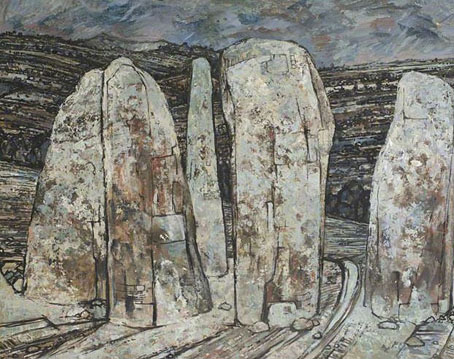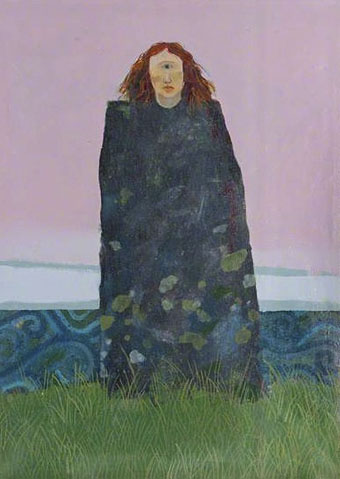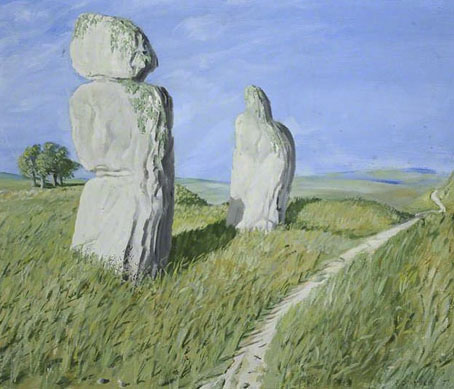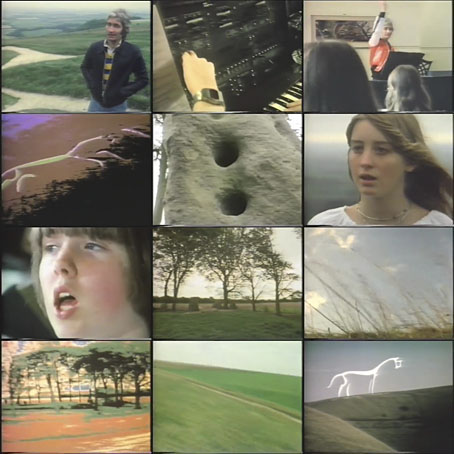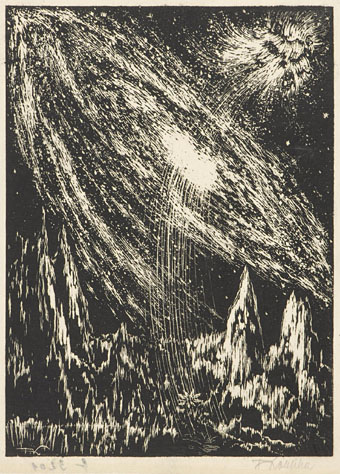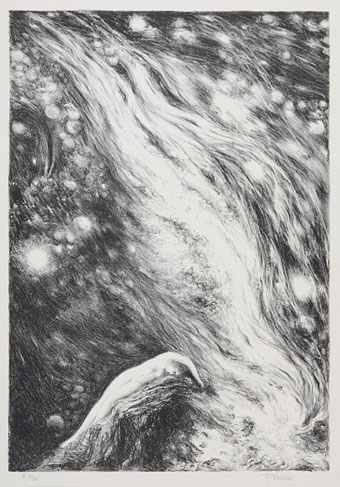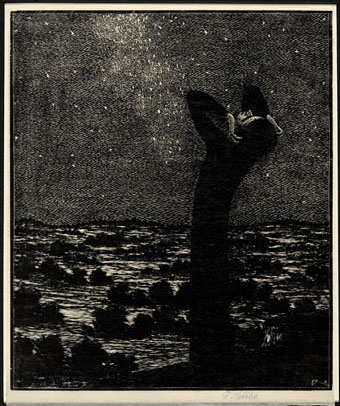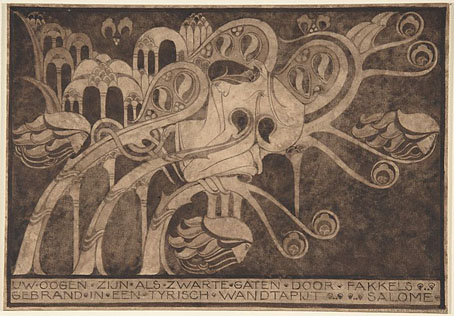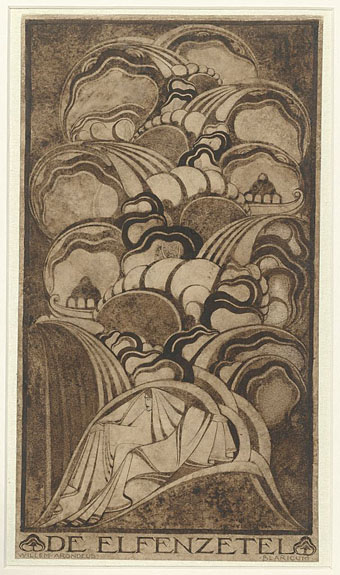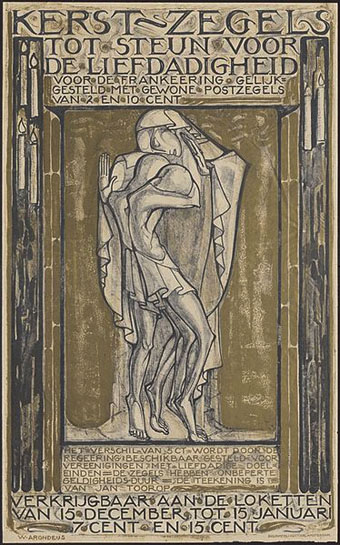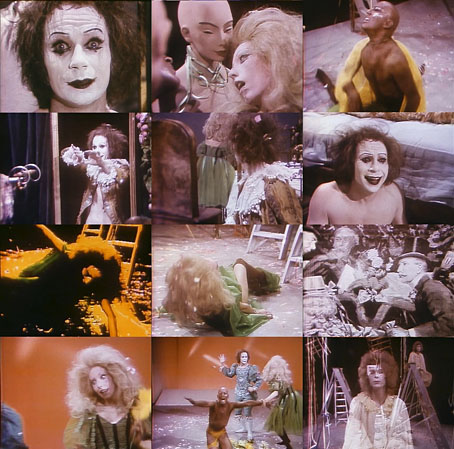Standing Stones (recto) (1960) by Jonathan D. Cramp.
The Uffington White Horse is famously best viewed from the air which not only prompts continual speculation about its creation but also explains why there aren’t many paintings of it. White horses in British art are either the physical creatures or the much later chalk figures that can be found on southern hillsides. More surprising, perhaps, is the lack of paintings of Britain’s many neolithic monuments. Gothic and other ruins were a common feature of Romantic art but—Stonehenge aside—the circles and monoliths that litter the British landscape seem to have been ignored until very recently.
All the paintings here are from the BBC’s Your Paintings catalogue of the art on public display in Britain, and its notable that their dates coincide with the popular resurgence of interest in neolithic monuments. (The site does show a few older paintings but they’re a mix of the unattributed and the unimpressive.) Derek Jarman’s paintings of Avebury are absent since they were featured here last month. I especially like the stark and sombre picture by Gomer Lewis, an artist whose work I hadn’t seen before.
Standing Stone (1976–1977) by Helen F. Wilson.
Standing Stones (1977) by Peter Standen.

